Myth 1: Innovation is a solo activity
- → The myth: We tend to see innovation as a solo activity, with creative geniuses like Steve Jobs and Elon Musk finding great technological breakthroughs by themselves
- → Debunked: More often, innovation is the result of a group effort, combined with (outside-in) inspiration, and the right environment
Together-Alone
Alone? Or together? When we brainstorm at ORTEC, we do it Together-Alone. Everyone writes down their ideas individually first, before sharing and discussing them with the group. This way, no one is influenced by the ideas of others. Next up is Brainwriting, which generally produces the best ideas. With brainwriting, all participants continue working on the ideas of others, but are only allowed to add something (“yes, and…”). Seeing the ideas of others often unlocks a new way of thinking. Combining different points of view, perspectives, and experiences tends to bring out the best ideas
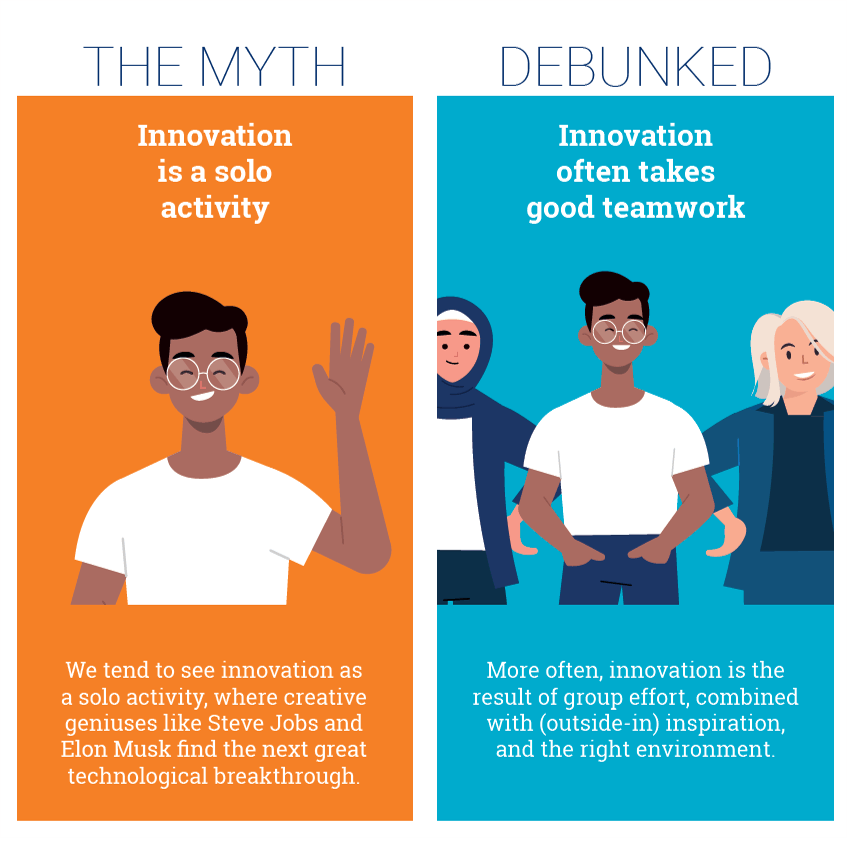
Myth 2: Innovation 'just happens, it cannot be forced
- → The myth: Eureka! You’re just walking your dog or taking a shower, when lightning strikes and you get a brilliant idea. It just ‘happens’ and is not something that can be forced or managed
- → Debunked: Creating space and a having a process to guide you will help you develop lasting ideas: from understanding users and their problems to generating ideas and flexing your creative muscles
Out of every 1,000 ideas, only 1 will typically survive the next 3 years.* Imagine how long it would take to collect a thousand shower-fueled Eureka moments. Deliberately creating space and following a procedure to guide you from understanding the user and their problems to generating ideas will help develop lasting ideas.
*Source: Stanford University, Improving Your Odds at Positive Disruption, 2019
“Out of every 1,000 ideas, only 1 will typically survive the next 3 years.”
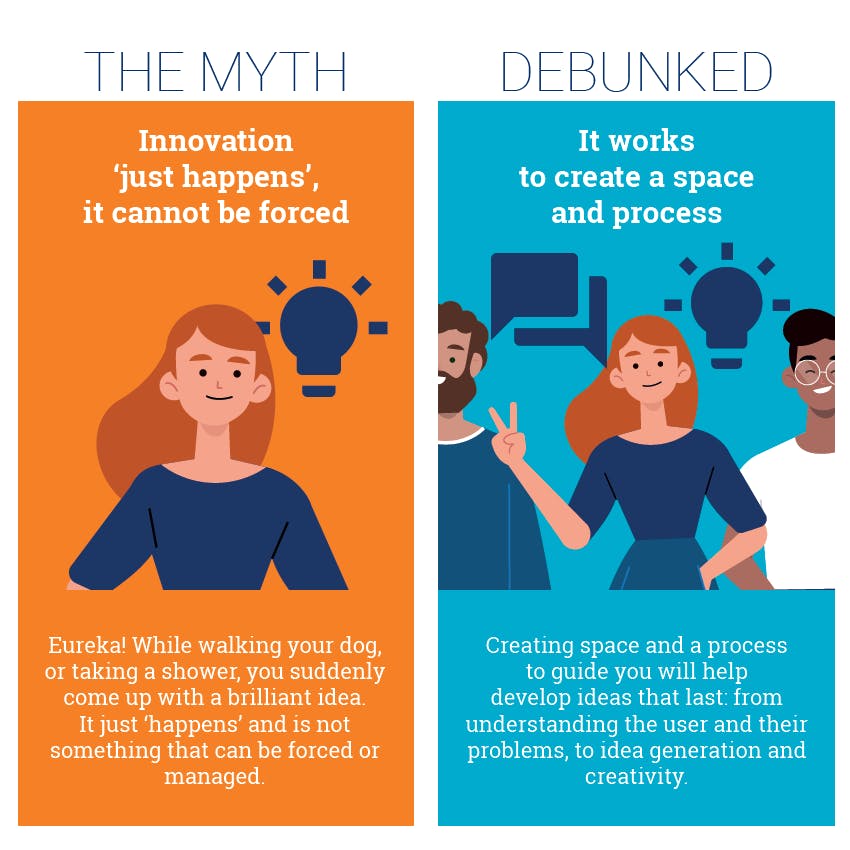
Myth 3: Innovation is costly and time-consuming
- → The myth: Companies want to be innovative and develop future-proof solutions, but when they hear the word “innovation”, most think of long, expensive, and risky R&D projects.
- → Debunked: Startups prove that you can also be innovative with limited resources. The faster you give users a new product, the faster you can learn from them, unlocking more effective adaptation and innovation
Startups use the 'build-measure-learn framework' widely and develop innovations much more rapidly than many large organizations. The idea is simple: the faster you bring your products to users, the faster you can learn from them and adapt. Be critical about your assumptions and test them with real users. You’ll have to accept that some of your assumptions might be wrong or, in the worst case, that your idea has no future. This way, you can discover early on that your idea has merits or is destined to fail.
*Source: Stanford University, Improving Your Odds at Positive Disruption, 2019

Myth 4: Innovation is always big & disruptive
- → The myth: Digital trends like AI and big data are often associated with disruption and radical change. Some even believe that something can only be considered a “real innovation” if it’s a big breakthrough.
- → Debunked: Innovation doesn’t have to be big, it just has to be novel. Adopting new technologies like AI can add value in safer and less fundamental ways, e.g. by improving existing processes or products.
It is true that new technologies can potentially allow us to rethink how we did things before and pave the way for disruptive business operating models, but innovation can also be much simpler than that. At ORTEC, we started using AI to learn about the stop times used in our routing solutions. Predicting stop times in a more accurate and targeted way has had a massive impact on the reliability of predicted delivery times (and therefore customer satisfaction) while also reducing unnecessary slack in the planning and driving more efficiency. This improvement meshes perfectly with our existing products and is easy to integrate.
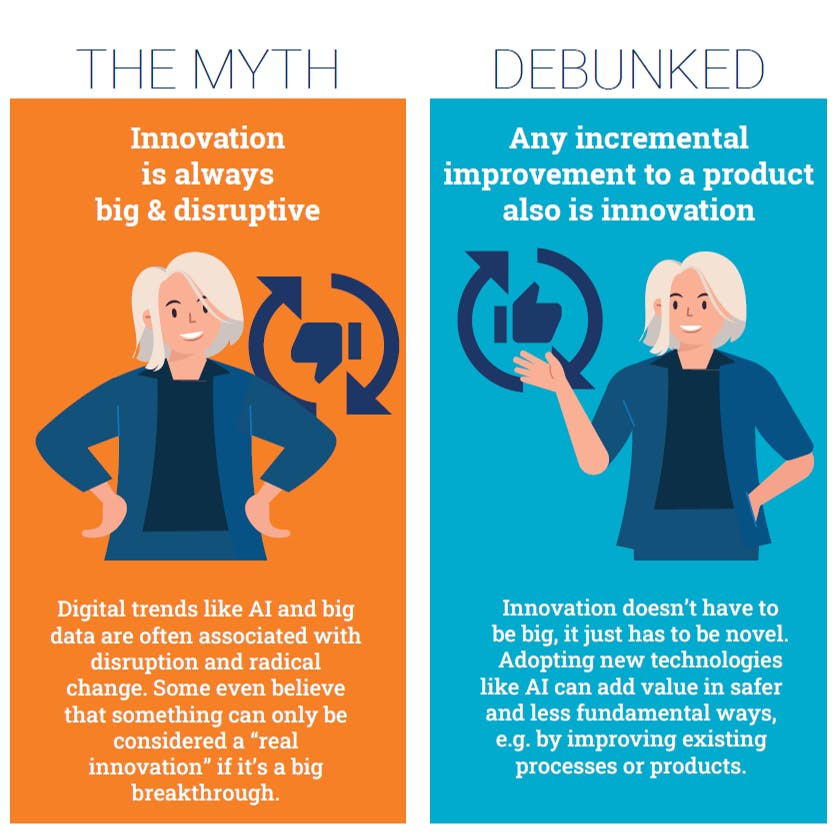
Myth 5: Innovation requires cutting-edge technology
- → The myth: Technology can be a huge enabler of innovation. It is undeniable that technological breakthroughs such as AI, blockchain, and digital twins are changing the world we live in and make “the impossible, possible”.
- → Debunked: Interpreting customer needs can produce ideas for simple solutions that do not require any new technology. Innovation can also consist of finding a new application for existing technology or changing a business concept.
At ORTEC, we use our approach to innovation in different ways. We use it to develop new products, to identify new business models, but also to improve existing processes such as our internal business development processes. We noticed that the long, detailed proposals we used to write were not only difficult and time-consuming for us, but also hard to read and understand for our customers. This insight sparked an opportunity to improve our process: we simplified how we write proposals, incorporating everything customers need to know in one simple but captivating slide.
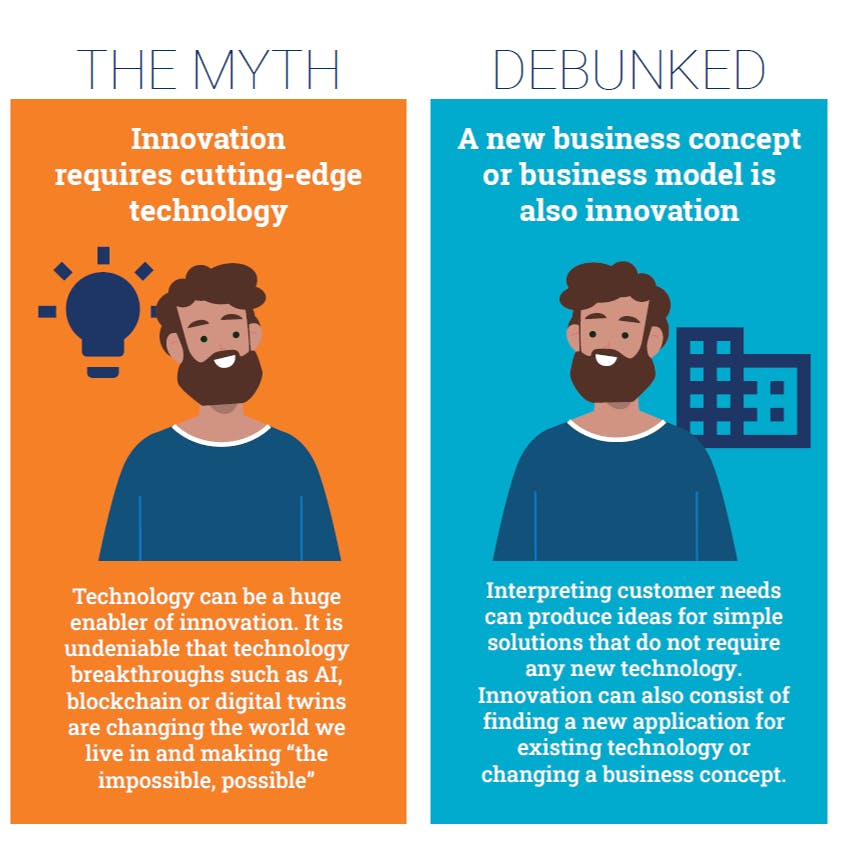
Needs-driven innovation has an astonishing 86% success rate, while idea-driven innovation barely reaches 10 to 20%.
Source: S. Wunker, Jobs to be done, 2022
Myth 6: A brilliant idea is the key to innovation
- → The myth: People often believe that if they come up with a good idea, it will become successful. This is why a lot of innovation initiatives start by coming up with a great idea first: idea-driven innovation.
- → Debunked: Though it might sound reasonable, idea-driven innovation has a big pitfall. Because you’re only focused on the solution, you’re not asking yourself whether customers are actually interested in it and willing to spend money on it.
The most successful and innovative companies in the world, rely on need-driven innovation which turns things around and starts the process by examining user needs. At ORTEC, we start by walking a mile in our users’ shoes to understand their needs, before brainstorming possible solutions. This way, the solution will feel more comfortable the closer you get to launch, because the better you understand the needs of your users, the more certain you can be that your innovation meets them.
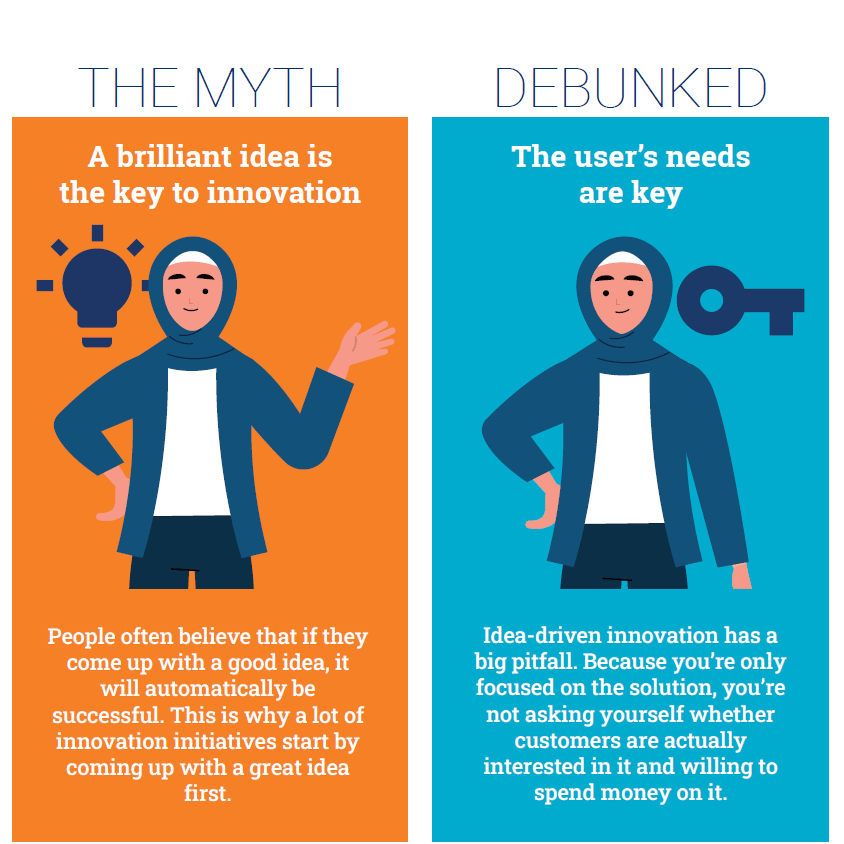
Don't miss out on the next insights
Sign up to our mailing list and be the first to receive our newest insights and digital magazine in your mailbox on a quarterly basis.
